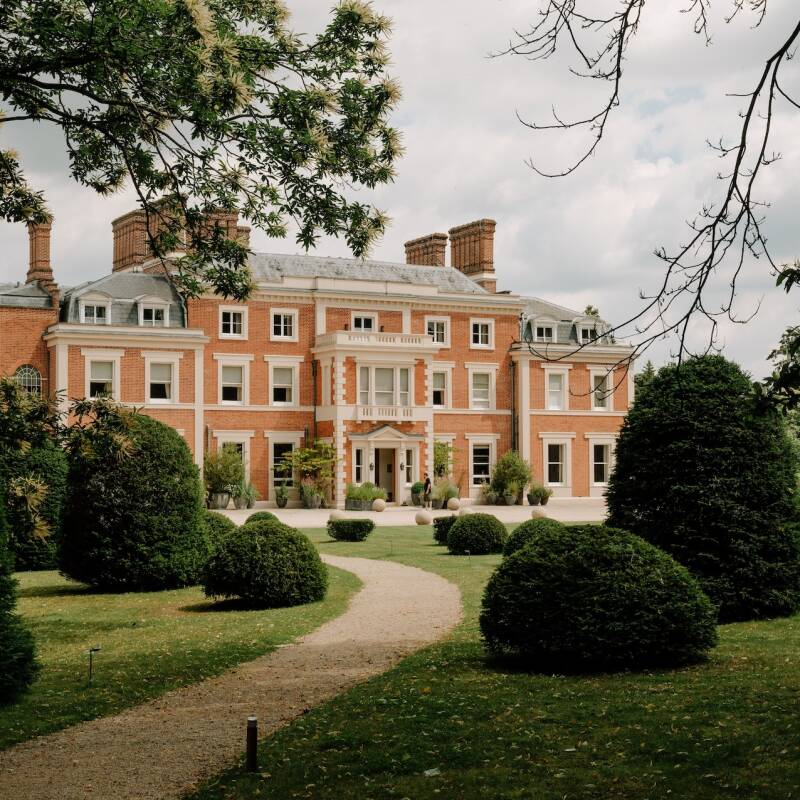The British countryside can be a noisy place, especially in summer. Over the loud complaints of sheep being sheared in the next field, as well as a swarm of bees in the orchard, the warblings of baritones and mezzo-sopranos drift over the garden at Glyndebourne, home of the original country house opera.
We take a tour and find that during opera season there is something here for all the senses:
Photography by Howard Sooley.

Above: The Glyndebourne experience begins in the afternoon and can last until midnight. The lawns and gardens around the house provide a site for picnicking during the long interval. The atmosphere is a “curiously comfortable” combination of formality and informality; in other words, classic English country house style.
Although the original house dates back to the early 15th century, it has been tinkered with by Elizabethans and Victorians and, more recently, by the founders of the opera and succeeding generations. The latter have worked their way through three sets of opera spaces: the most recent auditorium was opened in 1994.

Above: Clary sage Salvia sclarea ‘Turkestanica’ and the yellow foxglove Digitalis lutea. Head gardener Kevin Martin and garden consultant John Hoyland have been adding their own newer layers to areas of the garden which were once overseen by Christopher Lloyd.
The most recent addition to Glyndebourne is a traditional rose garden (which Lloyd may have struggled with, having bulldozed his own). Overlooked by the croquet lawn, which is intended for the recreation of opera artistes, the mainly pink rose garden is a homage to the mother of Gus Christie, current incumbent of Glyndebourne and third generation of the family to run the opera. Although this part of the garden is very young it leans more toward formality and is punctuated by chess-piece topiary; a wonderful backdrop to the formal attire of opera-goers.

Above: The exuberance of the Terrace Border which runs along the front of the house toward the theater. On the day of my visit the wife of Gus Christie, Glyndebourne’s owner, had just given birth to their first child (he already has four sons). She is the soprano Danielle de Niese, who will be starring in a Ravel double bill at Glyndebourne in August.

Above: The Figaro Garden, designed by Kim Wilkie, is a cool crossroads, enclosed by yew and planted simply with robinia trees. No flowers.
The creator of the opera festival, John Christie, was also married to a soprano and the family has long been involved in the arts. London’s White Cube gallery has a pop-up exhibition space at Glyndebourne for 2015. Temporary sculpture, like the dog in the boat above, or a life-size Diana running through the field over the ha-ha, are a part of the opera’s landscape.

Above: An orchard surrounds the kitchen garden. Food is grown for the house, which is home to principle artistes, directors and conductors during the season, as well as the Christie family. The spirit of common enterprise is strong; the theatrical atmosphere is appreciated by all, including the gardeners.

Above: Field Scabious grows in the meadows which form part of the orchard and continue down towards the lake.

Above: An English orchid by the lake; a quieter place to picnic during the ninety-minute interval. Although there are further lakes (“Glyndebourne” means valley and river), this one has three springs feeding into it. Closer to the house, the opera’s setting is suitably exuberant, with views beyond the ha-ha of the South Downs.

Above: The new theater is nestled in jungle planting including Acanthus mollis (Bear’s Britches). This sheltered part of the garden was originally devised by Mary Keen.
For more on opera-loving gardener Christopher Lloyd, see Required Reading: The Best of Christopher Lloyd.












Have a Question or Comment About This Post?
Join the conversation (0)